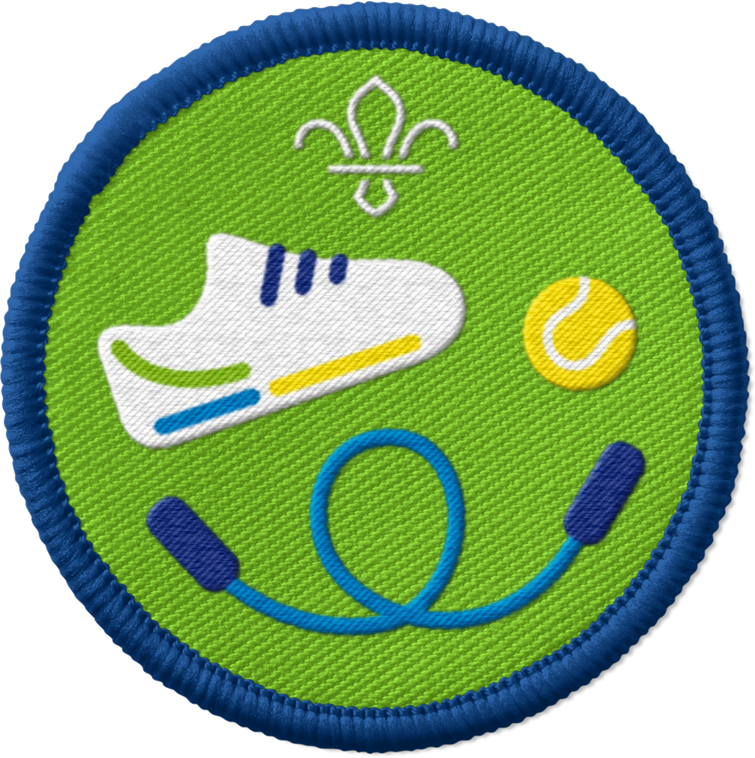
Play Capture the Keys
You’ll need
- Chairs
- Keys
Before you begin
- Use the safety checklist to help you plan and risk assess your activity. There's also more guidance to help you carry out your risk assessment, including examples. Don’t forget to make sure all young people and adults involved in the activity know how to take part safely.
- Make sure you’ll have enough adult helpers. You may need some parents and carers to help if you’re short on helpers.
To watch in full screen, double click the video
Setting up the game
- Place the chair at one end of the space and mark a line at the opposite end of the space to the chair. Players should start on the line.
- You could also ask players stand in a circle and place a chair in the middle of the space. Make sure to mark where each person is stood with a cone, floor dot or similar.
- Place a set of keys under the chair. It could be your meeting place's keys, cupboard keys, house keys or car keys. Make sure they're nice and jangly, so they can be heard if moved.
Playing the game
- Choose a player to be ‘Keeper of the Keys’. They should sit on the chair.
- The ‘Keeper’ wears a blindfold or keeps their eyes closed.
- When you’re ready, one at a time, point at a player.
- The chosen player can sneak forward and attempt to get the keys without the ‘Keeper’ hearing them.
- If the ‘Keeper’ hears them, the keeper raises their hand and points at where they heard the sound.
- If the ‘Keeper’ points directly at where the player is, the player has been caught. They must go back to start and wait to go again. The keys are returned to under the chair.
- If the ‘Keeper’ points and hasn't found the player, the player can continue.
- The game continues until someone steals the keys and brings them back to the start without the ‘Keeper’ catching them.
- Once the keys are back at the start, without the player taking them having been caught, all the players pretend they have the keys behind their back.
- The ‘Keeper’ then takes off the blindfold and has three guesses to figure out who has taken the keys.
- You can then play again with a new person as the ‘Keeper’.
- You can play this game where works as a team to get the keys
- Shout ‘Go!’ to begin the game.
- All the players can start at the same time
- If someone is pointed to, they go back to the start and try again.
- If someone is pointed to and they're holding the keys, the keys are returned to under the chair. You could also play where the player holding them puts them down where they are and returns to the start.
- If someone reaches the keys and steals them, they can try to silently pass the keys to other players, with everyone working to get the keys quietly back to the start.
- Once the keys are back at the start, without the player taking them having been caught, all the players pretend they have the keys behind their back.
- The ‘Keeper’ then takes off the blindfold and has three guesses to figure out who has taken the keys.
- You could have two teams try and compete against each other.
- You can play this game where everyone tries to get the keys at once.
- Shout ‘Go!’ to begin the game.
- All the players can start at the same time.
- If someone is pointed at, they go back to the start and try again.
- The game continues until someone steals the keys and brings them back to the start without the ‘Keeper’ catching them.
- Once the keys are back at the start, without the player taking them having been caught, all the players pretend they have the keys behind their back.
- The ‘Keeper’ then takes off the blindfold and has three guesses to figure out who has taken the keys.
Reflection
This game encouraged everyone to try, try again and problem solve as they crept quietly and tried to capture the keys.
After playing the game, encourage everyone to come together to reflect. You could use the following questions to start conversations:
- How did people feel when they were sneaking up to grab the keys?
- Was it difficult to keep quiet?
- What was it like to sit in the chair and listen carefully?
- How did it feel to have to go back to the start?
Safety
All activities must be safely managed. You must complete a thorough risk assessment and take appropriate steps to reduce risk. Use the safety checklist to help you plan and risk assess your activity. Always get approval for the activity, and have suitable supervision and an InTouch process.
- Active games
The game area should be free of hazards. Explain the rules of the game clearly and have a clear way to communicate that the game must stop when needed. Take a look at our guidance on running active games safely.
You could play with an adult volunteer or young leader in the chair. You could ask them to make the game a little easier by pretending not to hear any small sounds (or see any small movements), as younger children might struggle to be quiet and still.
Make it accessible
All Scout activities should be inclusive and accessible.
You may need to decide some sounds or movements don’t count in this game. For example, if anyone uses a mobility aid that makes noise.
Encourage everyone to have a go at sneaking up to the keys. If anyone’s feeling unsure about the game, they could take a friend to go with them.

